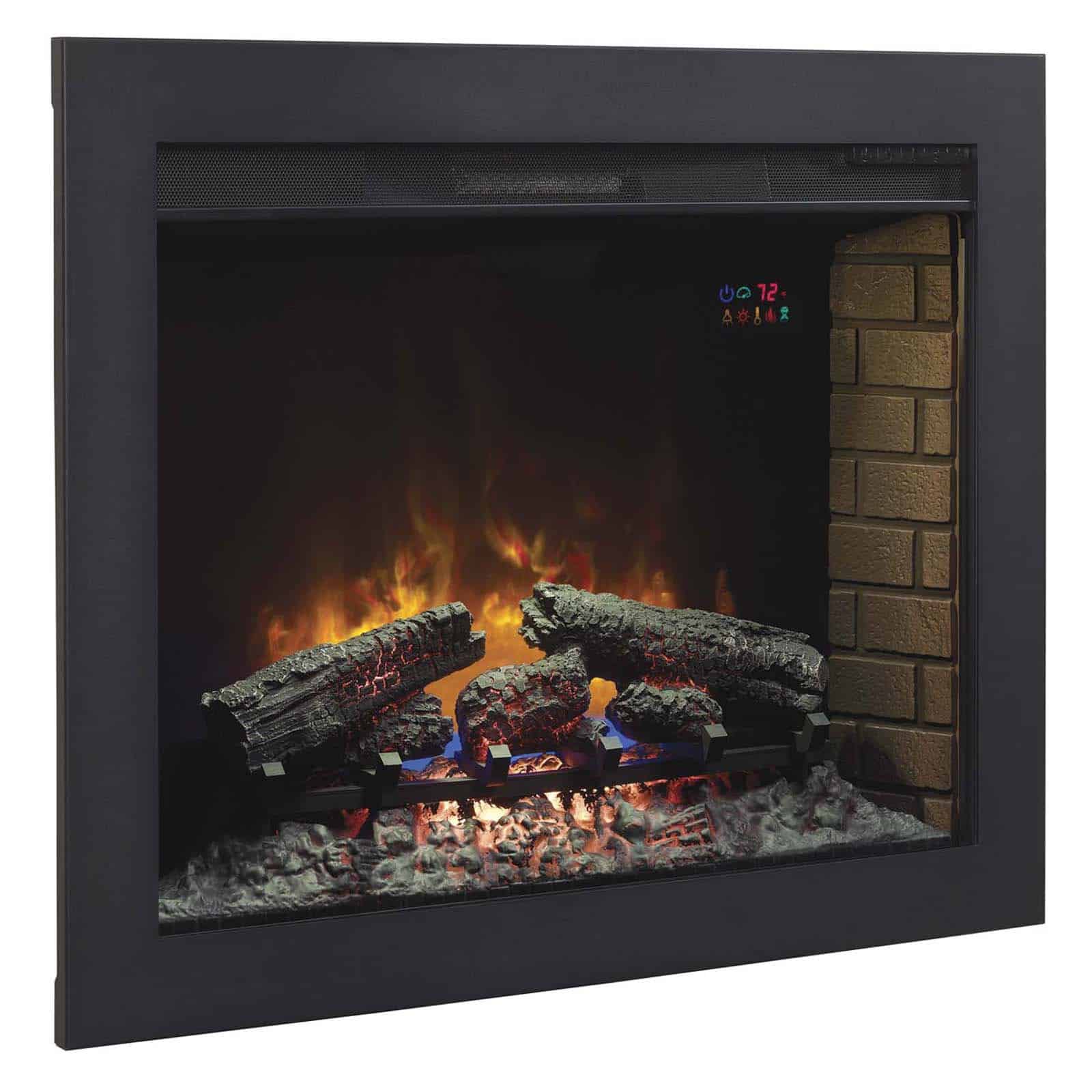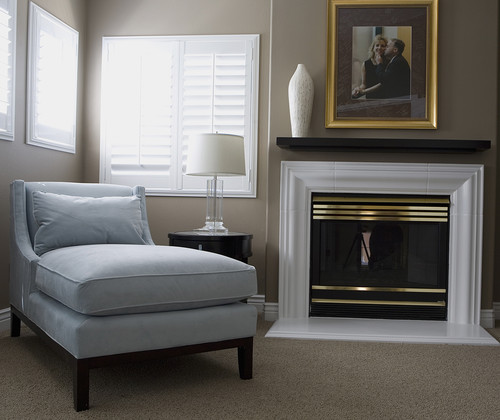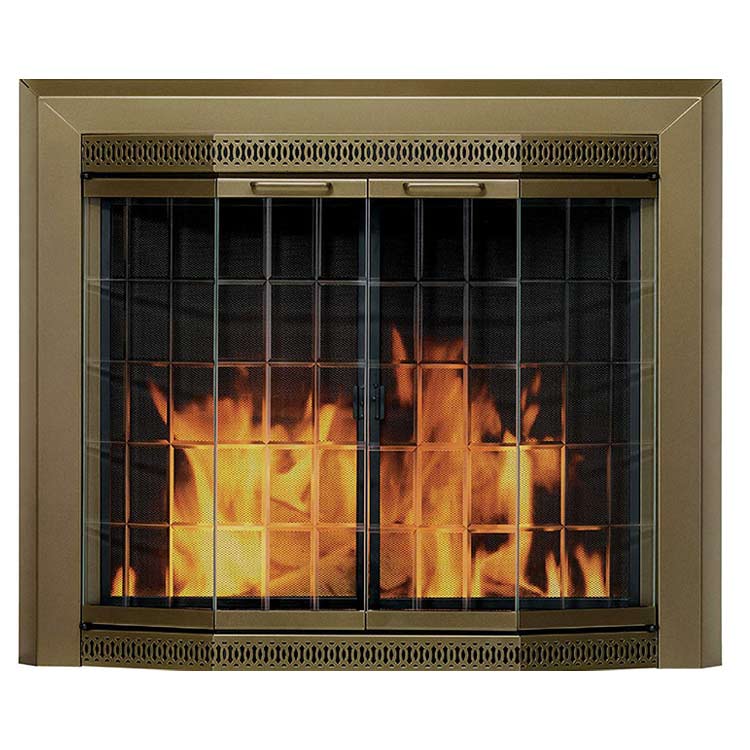Gas fireplaces are a popular feature in many homes, providing warmth and ambiance without the hassle of a wood-burning fireplace. However, over time, the brass trim on these fireplaces can become outdated or tarnished, necessitating a replacement. Replacing the brass trim on a gas fireplace can rejuvenate its appearance and enhance the overall aesthetic of your living space. We will walk you through the process, offering detailed steps, tips, and common pitfalls to avoid.
Understanding Your Gas Fireplace and Its Components
The Structure of a Gas Fireplace
A gas fireplace typically consists of several key components: the firebox, the burner, the gas logs or glass, the control system, and the exterior trim. The firebox is the main chamber where the fire burns, while the burner is responsible for igniting the gas. The control system, which can be a manual switch or remote control, regulates the flow of gas and the height of the flames. The exterior trim, which often includes brass, is the decorative frame that surrounds the fireplace.
The Role of Brass Trim
Brass trim serves both a functional and aesthetic purpose. Functionally, it can help protect the edges of the fireplace and conceal any gaps between the fireplace unit and the surrounding wall. Aesthetically, brass trim adds a touch of elegance and can complement various interior design styles. However, brass can tarnish over time due to exposure to heat, humidity, and air pollutants.
Common Issues with Brass Trim
Over time, brass trim can suffer from discoloration, tarnish, and scratches. Discoloration can occur due to prolonged exposure to high temperatures and direct flame. Tarnish, a common issue with brass, results from oxidation, causing the metal to lose its shine and develop a dull, darkened appearance. Scratches and dents can also mar the trim, especially if it’s located in a high-traffic area.

The Decision to Replace Brass Trim
Deciding to replace the brass trim on your gas fireplace is often driven by aesthetic preferences and the condition of the existing trim. If the brass is severely tarnished, scratched, or simply doesn’t match your updated home decor, replacement is a viable option. New trim can instantly modernize the look of your fireplace and align it with contemporary design trends.
Choosing the Right Replacement Trim
When selecting a replacement for your brass trim, consider materials such as stainless steel, nickel, or powder-coated metals, which offer durability and a modern look. Ensure that the replacement trim is compatible with your fireplace model and can withstand the heat generated by the fireplace. It’s also important to choose a finish that complements your room’s decor.
Tools and Materials Needed for Replacement
Before starting the replacement process, gather the necessary tools and materials. You’ll need a screwdriver, a putty knife, a heat-resistant adhesive, a measuring tape, and your chosen replacement trim. Additionally, having protective gloves and eye protection is advisable to prevent injury during the process.

Step-by-Step Guide to Replacing Gas Fireplace Brass Trim
Preparing for the Replacement
Safety First: Ensure the fireplace is turned off and has cooled completely before beginning the replacement process. Disconnect the gas supply if possible to avoid any accidental ignition.
Clear the Work Area: Remove any decorative items or furniture around the fireplace to create a safe and spacious work area. Lay down a drop cloth to protect your flooring from any debris or adhesive spills.
Gather Tools and Materials: As previously mentioned, having all your tools and materials ready will streamline the process. Double-check that you have everything on hand to avoid interruptions.
Review Manufacturer Instructions: If your replacement trim comes with manufacturer instructions, review them carefully. These instructions can provide specific guidance tailored to the trim and your fireplace model.
Measure the Existing Trim: Use a measuring tape to accurately measure the dimensions of the existing brass trim. This ensures that your replacement trim will fit properly and that any cuts you need to make are precise.
Document the Process: Take photos of the existing trim and its installation. This can be helpful as a reference during the replacement process, ensuring you reassemble everything correctly.

Removing the Old Brass Trim
Locate Screws or Fasteners: Brass trim is typically secured with screws or other fasteners. Locate these fasteners, which are often hidden along the edges of the trim or behind decorative covers.
Remove Fasteners Carefully: Using a screwdriver, carefully remove the screws or fasteners. Keep these screws in a safe place as you may need them for installing the new trim.
Detach the Trim: Gently pry the trim away from the fireplace using a putty knife. Be cautious to avoid damaging the surrounding materials or the firebox itself.
Clean the Area: Once the trim is removed, clean the exposed area thoroughly. Remove any residual adhesive, dust, or debris to ensure a smooth surface for the new trim.
Inspect for Damage: Check the surrounding area and the firebox for any damage that might need repair before installing the new trim. Address any issues to ensure a secure installation.
Dispose of Old Trim: Properly dispose of the old brass trim. If the trim is in good condition, consider recycling it or donating it to a salvage yard.

Interesting Articles You May Want to Check:
- How To Remove Gas Fireplace Glass
- Gas Fireplace Key Valve
- Gas Fireplace for Basement
- Gas Fireplace Heat Output
- Gas Fireplace Venting Requirements

Installing the New Trim
Test Fit the New Trim: Before applying any adhesive, test fit the new trim to ensure it fits properly. Make any necessary adjustments to the trim to achieve a perfect fit.
Apply Heat-Resistant Adhesive: Using a heat-resistant adhesive, apply a thin, even layer to the back of the new trim. Follow the adhesive manufacturer’s instructions regarding drying time and application.
Position the Trim: Carefully position the new trim onto the fireplace. Press firmly to ensure the adhesive bonds properly. Hold the trim in place for a few minutes to allow the adhesive to set.
Secure with Fasteners: If your new trim design requires screws or other fasteners, use the existing holes from the old trim or create new ones as needed. Secure the trim with screws, ensuring they are tightened evenly.
Final Adjustments: Check the alignment of the trim and make any necessary adjustments before the adhesive fully sets. Ensure the trim sits flush against the fireplace with no gaps.
Clean Up: Remove any excess adhesive that may have seeped out during installation. Wipe down the trim and the surrounding area to remove any fingerprints or smudges.

Post-Installation Tips
Allow Adhesive to Cure: Follow the adhesive manufacturer’s recommendations for curing time. Avoid using the fireplace until the adhesive is fully cured to ensure a strong bond.
Inspect Your Work: Once the adhesive has cured, inspect the trim installation for any signs of movement or gaps. Make any necessary adjustments before using the fireplace.
Reattach Decorative Items: If you removed any decorative items or furniture, now is the time to reattach or reposition them around the fireplace.
Regular Maintenance: To keep your new trim looking its best, establish a regular cleaning routine. Use a soft cloth and a mild cleaner to remove dust and fingerprints.
Protective Measures: Consider applying a protective coating to the trim to prevent tarnishing and scratches. This can extend the life of your new trim and keep it looking new.
Monitor Fireplace Operation: After any modification to your fireplace, monitor its operation closely to ensure it functions properly and safely. Address any issues immediately to prevent damage.

Common Mistakes to Avoid
Not Turning Off the Gas Supply: Always ensure the gas supply is turned off before starting any work on your gas fireplace. Failure to do so can result in dangerous gas leaks or accidental ignition.
Improper Measurements: Accurate measurements are crucial for a successful trim replacement. Incorrect measurements can lead to poorly fitting trim and an unprofessional appearance.
Using Inappropriate Adhesive: Ensure you use a heat-resistant adhesive designed for high-temperature applications. Regular adhesives can fail under the heat generated by the fireplace.
Rushing the Process: Take your time during the replacement process. Rushing can lead to mistakes, such as misaligned trim or incomplete adhesive bonding.
Ignoring Manufacturer Instructions: Manufacturer instructions provide important guidance specific to your trim and fireplace model. Ignoring these instructions can lead to installation errors.
Neglecting Safety Gear: Always wear protective gloves and eye protection when working with tools and materials. Neglecting safety gear can result in injuries.

How long does it take to replace the brass trim on a gas fireplace?
Replacing the brass trim on a gas fireplace typically takes a few hours, depending on your experience and the complexity of the trim. This includes time for preparation, removal of the old trim, installation of the new trim, and cleanup. Allow additional time for the adhesive to cure, which can vary based on the product used.
Can I paint my existing brass trim instead of replacing it?
Yes, painting your existing brass trim is an alternative to replacement. Use a high-temperature primer and paint designed for metal surfaces. Ensure the fireplace is off and cool before painting. While painting can refresh the appearance of the trim, it may not provide the same durability as new trim.
Do I need a professional to replace my gas fireplace trim?
While replacing the gas fireplace trim is a DIY-friendly project, hiring a professional can ensure a flawless installation, especially if you are uncomfortable working with tools or gas appliances. A professional can also address any underlying issues with the fireplace.
What materials are best for gas fireplace trim?
Materials such as stainless steel, nickel, and powder-coated metals are excellent choices for gas fireplace trim. These materials are durable, heat-resistant, and available in various finishes to match your decor. Avoid materials that can tarnish easily or are not designed to withstand high temperatures.
How do I maintain my new fireplace trim?
Regular maintenance includes dusting the trim with a soft cloth and cleaning it with a mild, non-abrasive cleaner. Avoid using harsh chemicals that can damage the finish. Applying a protective coating can also help prevent tarnishing and scratches. Establishing a routine cleaning schedule will keep the trim looking new.

Related Images for Inspiration



The crackling fire, the warm glow, the cozy ambiance – a gas fireplace is a welcome addition to any home. But what happens when the once-gleaming brass trim starts to show its age, tarnishing and dulling the fireplace’s charm? Replacing the brass trim is a relatively simple DIY project that can breathe new life into your fireplace, transforming it from tired to timeless. This article will guide you through the process, step-by-step, equipping you with the knowledge and confidence to tackle this upgrade and enjoy a revitalized focal point in your home.
Related Posts:
- Gas Fireplace Portable
- Gas Fireplace Direct Vent Kit
- Ventless Natural Gas Fireplace Wall Mount
- Gas Fireplace Outlet
- Direct Vent Gas Fireplace Installation Requirements
- Gas Fireplace Heatilator
- Gas Fireplace Pilot Light Will Not Stay Lit
- Vented Gas Fireplace Heater
- Gas Fireplace Parts Diagram
- Gas Fireplace Vent Requirements
